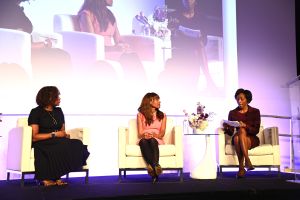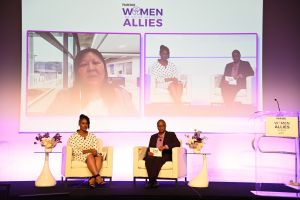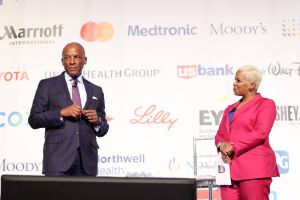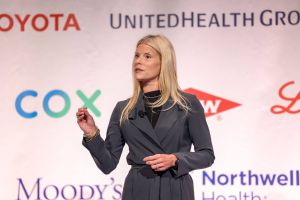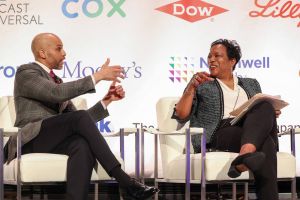By Barbara Frankel

We look at four companies that have been mainstays on the Fair360, formerly DiversityInc Top 50 – two in an engineering-based industry and two in consumer products. In both industries, there is increasing recognition of the need for more diverse workforce.
Yet, two companies rise on the Fair360, formerly DiversityInc list and two companies fall.
Here are the contributing factors to diversity success:
- · Visible and strong CEO commitment
· Emphasis on increasing ERG participation
· Outreach to LGBT, disability, veterans communities
· Effective executive diversity council with rotating
ERG members
· Solid supplier diversity
Here are the contributing factor to diversity declines:
- · Not competitive in war for diverse talent
· Abandonment of cross-cultural mentoring
· Poor employee-resource group participation - · Lack of diversity at top level
· No cross-cultural and little formal mentoring
· Ineffective diversity communications
Case Study No. 1
Engineering-Based Company That Rose
Led by a CEO who personally created and leads the executive diversity council, the deep-rooted diversity initiative at this large company spans many dimensions.
An early leader in supplier diversity, the company has maintained its emphasis on mentoring and growing its suppliers while mandating that its direct (Tier I) contractors also use diverse suppliers (Tier II).
Its workforce D&I efforts have improved dramatically in the past five years, causing the company to climb on the list. By focusing on increasing the talent pipeline for people from under-represented groups, the company has dramatically improved its management representation of Blacks, Latinos and Asians.
The diversity effort here includes much more than race/ethnicity and demographics. This company has had an increasing focus on people with disabilities, veterans and the LGBT community, and has proved itself an innovative thought-leader in all three areas.
Its emphasis in the past two years has been on increasing participation in cross-cultural mentoring and employee-resource group membership, with double-digit gains in both areas. Its resource groups in particular show significant progress. One factor that has greatly contributed is its annual resource-group conference, which is attended by its CEO and senior leaders.
Contributing Factors
· Visible CEO commitment
· Emphasis on increasing ERG participation
· Outreach to LGBT, disability, veterans communities
Recommendations for This Company
· Make D&I commitment a significant factor in CEO succession planning
· Set higher goals (and hire more externally) for women in top levels
Case Study No. 2
Engineering-Based Company That Fell
This company, which once was a leader on the Fair360, formerly DiversityInc Top 50 list, has fallen steadily over the past few years.
Both the former and the current CEO have said they are supporters of diversity and inclusion but from data submitted, it appears the D&I staffing and resource group funding has not remained competitive. That said, the company this year reinstated its executive diversity council, which is a step in the right direction.
We hope the new council will push the company to ramp up the two best practices that have the most impact on human-capital results – formal, cross-cultural mentoring and employee-resource groups.
While this company has long-standing employee-resource groups available to all employees, including hourly workers, its percentage of participation is less than 4 percent and most of those employees are at corporate headquarters. That’s a wasted opportunity.
Mentoring, which both our data and numerous studies show is extremely effective at building a diverse talent pipeline, isn’t a factor at this company. A previous effort at formal, cross-cultural mentoring has been dropped and current, loose efforts don’t include cultural awareness training, measurable goals or follow-up.
Contributing Factors
· Not competitive in war for diverse talent
· Abandonment of cross-cultural mentoring
· Poor employee-resource group participation
Recommendations for This Company
· Expand new diversity council to include
employee-resource group leaders and establish
business-unit councils
· Reinstate formal cross-cultural mentoring and
mandate executive involvement (with
cultural-awareness training)
· Focus on expanding employee-resource group
participation
Case Study No. 3
Consumer-Products Company That Rose
Under the guidance of a CEO who has made D&I a priority since he stepped into the role four years ago, this company has made strong progress with its employee-resource groups and supplier diversity.
An emphasis on metrics has helped its very committed chief diversity officer implement new initiatives. Executive compensation is linked to diversity goals and are part of executive performance reviews.
The executive diversity council at this company is a model for others, including rotating representatives of all its employee-resource groups. All council members are formal mentors and most are executive sponsors of resource
groups.
This year, the company has emphasized its resource group contributions to recruitment, engagement, talent development and community activities, with strong results.
It also has ratcheted up its supplier-diversity efforts and made an effort to help it sustain and grow its suppliers. This includes efforts with LGBT- and service-disabled-owned suppliers.
This company also has learned to communicate its diversity efforts effectively, both in a focused and metrics-based annual diversity report and on its website. Its marketing material for consumers often includes a multicultural emphasis.
Contributing Factors
· Strong CEO commitment
· Effective executive diversity council with rotating
ERG members
· Solid supplier diversity
Recommendations for This Company
· Continue to emphasize cultural-competence training for
recruiters
· Probe even deeper into resource groups to address
some pipeline issues, especially for Latinos and Asians
Case Study No. 4
Consumer-Products Company That Fell
A mainstay on this list for several years, this company doesn’t have much diversity at the top and doesn’t appear to have made it a priority.
Its top level has no Blacks or Asians and few women and Latinos. There were two internal promotions into this top level last year – both white men.
The company has talent-development initiatives in place but they don’t include mentoring. Only 1 percent of U.S. employees participate in mentoring and none of those pairings are cross-cultural. Virtually none of the top three levels of executives are formal mentors.
In addition, this company’s website has a diversity section that doesn’t tell you much (it is full of platitudes) and doesn’t feature either LGBT people or people with disabilities as desirable employees and customers.
Contributing Factors
· Lack of diversity at top level
· No cross-cultural and little formal mentoring
· Ineffective diversity communications
Recommendations for This Company
· Put in place (start with pilot) formal, cross-cultural mentoring
and require top leaders to participate
· Hire effective diversity communicators to emphasize the
importance to ALL communities internally and externally
· Require top executives to sponsor cross-cultural high
potential of their choice


